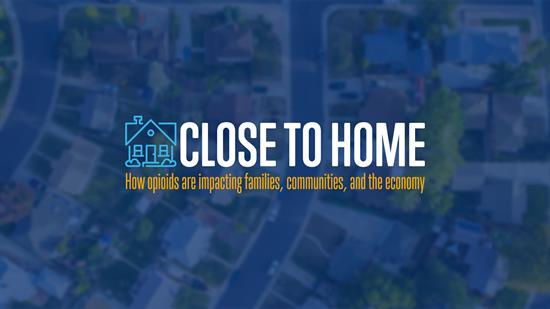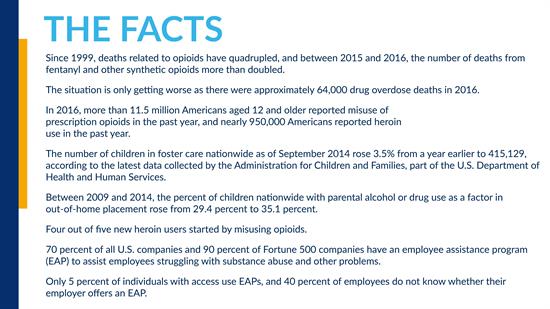E&W Blog
Close to Home: Facts and Voices from E&W Hearings on Opioids
WASHINGTON,
March 1, 2018
The opioid epidemic currently impacts over 11 million Americans, and its effects are being seen in workplaces, schools, communities, and families.
The opioid epidemic currently impacts over 11 million Americans, and its effects are being seen in workplaces, schools, communities, and families. Opioid misuse and abuse is a public health emergency, and has been the subject of two joint subcommittee hearings held by the Committee on Education and the Workforce. Both of these hearings provided members with the opportunities to hear from employers, educators, community leaders, and addiction/recovery experts on how the opioid abuse is being felt in communities across the country, and what is being done to address the problem. Here’s what members and witnesses had to say: “This is a very painful topic to be talking about, but I know it is one we still have to discuss.”—Rep. Virginia Foxx (R-NC), chairwoman of the Committee on Education and the Workforce. “Addiction is a family disease and if the whole family is not treated history will continue to repeat itself.”—Toni Miner, a Family Support Partner for the Child and Youth Leadership Commission from Jefferson County, Colorado. “It is one thing to read the statistics and accounts in the news about communities in the midst of the opioid crisis, but these accounts do not compare to the real voices we need to hear from in order to understand this crisis.”—Rep. Todd Rokita (R-IN), chairman of the Subcommittee on Early Childhood, Elementary, and Secondary Education.
“This epidemic impacts all parts of our society, but the combined impacts on households and the private sector account for the largest share of the societal burden and exceeded $46 billion dollars in 2016.”—Corwin Rhyan, Senior Analyst of the Altarum Institute. “Too many Americans – from all walks of life and from all parts of the country – are facing the terrifying realities of opioid abuse, and far too many are dying from opioid misuse and overdose every day.” —Rep. Tim Walberg (R-MI), chairman of the Subcommittee on Health, Employment, Labor, and Pensions. “When I talked with our principals about this a few years ago, they told me that they attributed much of the decline in attendance to parents not getting up and getting their kids to school because of drug use, and how difficult it was to make contact with parents to talk about attendance, achievement, and grades.”—Dr. David Cox, the Superintendent and Executive Officer of the County Board of Education in Allegany County, Maryland. “Everyone is looking for a silver bullet to our addiction crisis. There is no single intervention that alone is a silver bullet.”—Tim Robinson, the Founder and CEO of Addiction Recovery Care in Louisa, Kentucky.
While witnesses and members discussed the issues associated with the opioid problem in communities across America, they also discussed possible solutions to help reverse the damaging impact of opioid abuse. “We must educate our children of their own risk of being addicted. I talk with my children about it often, because it is not something that they think about every day. We need to have a prevention education for the children of adult addicts.”—Ms. Miner. “Employers are recognizing the risks that opioid abuse has on the workplace, and it is reassuring to hear that businesses large and small are taking steps to address this problem in their organizations.”—Rep. Bradley Byrne (R-AL), chairman of the Subcommittee on Workforce Protections. “Many employers are also taking significant steps to improve the availability of treatment and recovery services. These businesses should be applauded for their efforts, supported in pursuing better care for their employees, and empowered to find the best solutions for their specific situations.”—Mr. Rhyan. “It is important we hear about these experiences in order to inform the Congressional response to the crisis.”—Rep. Brett Guthrie (R-KY), chairman of the Subcommittee on Higher Education and Workforce Development. The Committee on Education and the Workforce is committed to being a part of the conversation in Congress to help bring this health emergency to an early end. Click here to learn more. # # #
|
Browse News
Stay Connected



